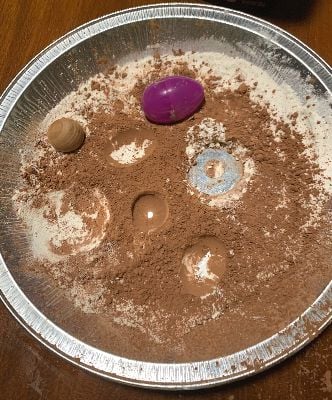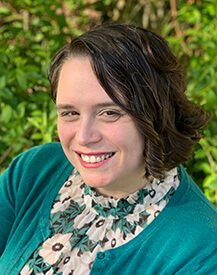The Moon
Moon Activities for Preschoolers
Young children will learn all about the moon with these moon activities for preschoolers.
Phases of the Moon Activity
Supplies needed:
- Ball (paint it white on one side and black on the other)
- Chalk (optional)
1) Draw the moon.
Ask your students to draw the moon. Find drawings and illustrations of the moon in books. Are all the drawings all the same?
2) Model the Phases of the Moon.
If you’re able to do this activity outside, draw a large circle with chalk on the ground.
- Assign one student to be the sun. The sun needs to stand still. They have the very important job of making sure the moon is facing the right way.
- Assign one student to be the Earth. They will stand in the center of the circle as the moon orbits and will make observations about the moon.
- A grown-up should control the moon. Holding the ball in front of you, move around the outside of the circle, orbiting the Earth. Make sure you’re always facing the white side of the ball towards the sun.
Exploration Questions:
Does the shape or size of the ball change as it moves around?
If the shape doesn’t change, what does?
Were there times when you could only see the white part of the ball? Were there times when you could only see the black part of the ball?
What about some white and some black?
Craters on the Moon Activity

Supplies needed:
- A baking pan with about an inch of flour in the bottom with a thin layer of cocoa powder on top of the flour
- Small “meteor” objects (pebbles, pom poms, marbles, balls of modeling clay, counters)
1) Talk about the moon.
Think about the moon they have seen in movies, TV shows, and even in the night sky. Share images of the moon - include photos taken from earth and photos and video taken by rovers that have actually visited the moon. Talk about how thee craters on the moon have been made by asteroids and meteors hitting the surface of the moon.
Exploration Questions:
Is the moon flat or a sphere?
Is the moon smooth?
How is the surface of the moon different from the surface of Earth?
Would you want to live on the moon? Why or why not?
2) Build your own moon surface.
Encourage your students to make observations of the pan of flour and cocoa. Drop a single ”meteor” into the pan. Remove the meteor and make observations about the crater left behind. Take turns dropping objects of different weights and sizes. Drop objects from different heights.
Exploration Questions:
Does this pan look like the surface of the moon?
Are some craters deep and others shallow?
Are all the craters round?
Why do you think they look different?
Do you think the moon was hit by pom poms, beads, marbles, and counters?
Background Insights
The surface of the moon is anything but smooth! It has craters, mountains, and “seas” made from hardened lava. The moon doesn’t produce its own light; it looks like it glows because it reflects light from the sun. While the moon does spin while it orbits the Earth (like the Earth spins as it orbits the sun), the time it takes to orbit the earth and make a full rotation are about the same, so the same side of the moon is always facing the Earth.
 Hollie is certified K-8 teacher who has been educating in the informal education field since 2005. She has developed and implemented countless exciting STEAM programs for families, classrooms, and teachers focused on the natural world, the scientific process, and ancient life. Her professional passions are inquiry, whole family learning, experiential learning starting in early childhood, and the intersection of literacy and science instruction.
Hollie is certified K-8 teacher who has been educating in the informal education field since 2005. She has developed and implemented countless exciting STEAM programs for families, classrooms, and teachers focused on the natural world, the scientific process, and ancient life. Her professional passions are inquiry, whole family learning, experiential learning starting in early childhood, and the intersection of literacy and science instruction.
She has recently developed a community-based program that encourages families to use dramatic play to learn science, increase literacy skills, and have fun together for which she received the Drexel University Presidential Award for Civic Engagement. She is most proud of her work on a popular science storytelling program for preschool families and classrooms that combines a book club format with engaging programs, innovative curriculum, and a hysterical puppet storyteller.
